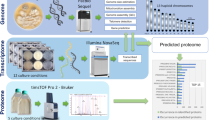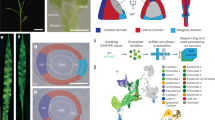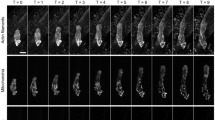Abstract
EXCEPT at the edges of young leaves, the 'dermatogen' cells in Dicotyledon shoot growing-points normally only divide anticlinally, but in many Monocotyledons they also divide periclinally where primordia are arising. That occasionally they may divide periclinally independently of leaf initiation was shown in a previous communication1. Since then, Miss E. A. Bindloss has mentioned (in a letter dated March 3, 1941) that she has also observed a similar situation in her material of maize plumules. It now seems that earlier, in Triticum, Rösier2 had noticed a single example of dermatogen cells dividing periclinally without being involved in the production of a primordium. The following interesting case now deserves recording.
This is a preview of subscription content, access via your institution
Access options
Subscribe to this journal
Receive 51 print issues and online access
$199.00 per year
only $3.90 per issue
Buy this article
- Purchase on SpringerLink
- Instant access to full article PDF
Prices may be subject to local taxes which are calculated during checkout
Similar content being viewed by others
References
Sharman, B. C., NATURE, 146, 775 (1940).
Rösler, P., Planta, 5, 28 (1928).
Author information
Authors and Affiliations
Rights and permissions
About this article
Cite this article
SHARMAN, B. A Periclinal Division in the 'Dermatogen' at the Growing Point of Couch Grass, Agropyron repens, Beauv. Nature 152, 276–277 (1943). https://doi.org/10.1038/152276a0
Issue date:
DOI: https://doi.org/10.1038/152276a0
This article is cited by
-
Die Histologische Struktur des Sprossvegetationskegels Einiger Commelinaceen unter Berücksichtigung Panaschierter Formen
Planta (1954)
-
The shoot apex in angiosperms
The Botanical Review (1954)



